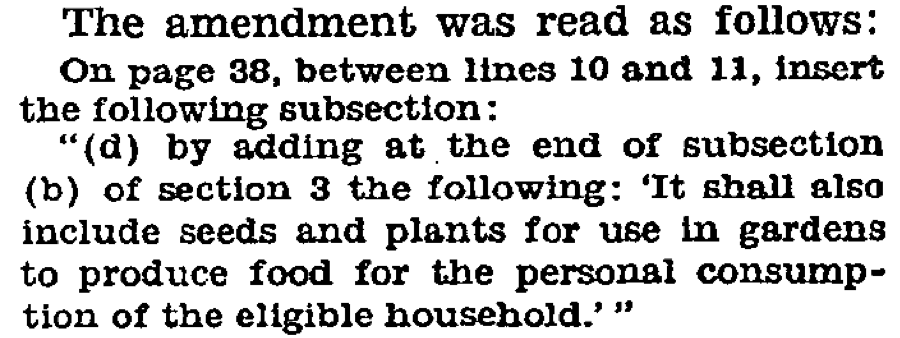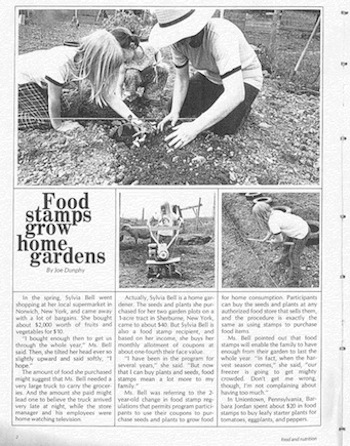History
On June 7, 1973, Senator James Allen of Alabama proposed an Amendment to the Food Stamp Act:
As Senator Allen explained:
The recipients of food stamps would thus be able to use their own initiative to produce fruits and vegetables needed to provide variety and nutritional value for their diets.
While this amendment does broaden the definition of food items which may be purchased with food stamp coupons, I would expect that the food stamp recipients would be able to purchase the seeds and plants they need from grocery stores who are now participating in the food stamp program.
I would not expect the Department of Agriculture to undertake the administrative costs of certifying those thousands of additional stores to supply the seeds and plants that food stamp recipients might wish to purchase.
The amendment would allow the food stamp recipient to purchase with his food stamps seeds and plants for the purpose of growing food for consumption by himself and his household.
It would allow a person to buy $1 or $2 worth of seed or vegetable plants and possibly have available a plot of land and be able to raise $50 or $100 worth of food for himself and his family.
It would encourage industry on the part of the food stamp recipient and it would be at no cost to the Federal Government.
The amendment was discussed by Senators Curtis, Pastore, and Talmadge, and immediately passed on a voice vote, and was included in the Farm Bill (Agriculture and Consumer Protection Act of 1973).
In October 1975, the USDA Food and Nutrition Service published an article called Food Stamps Grow Home Gardens by Joe Dunphy.
In December 1977, the USDA Food and Nutrition Service published an article called Families Garden Cooperatively by Herb Strum.
Senator James Allen passed away in 1978, while still serving in Congress.
Very little has been done to promote the fact that Food Stamps or SNAP EBT can be used to purchase food-producing plants and seeds ever since…until now!
(This history was cited in Footnotes 70 and 158 of the Congressional Research Service’s “The Role of Local Food Systems in U.S. Farm Policy” Report for Congress, published January 20, 2012.)



